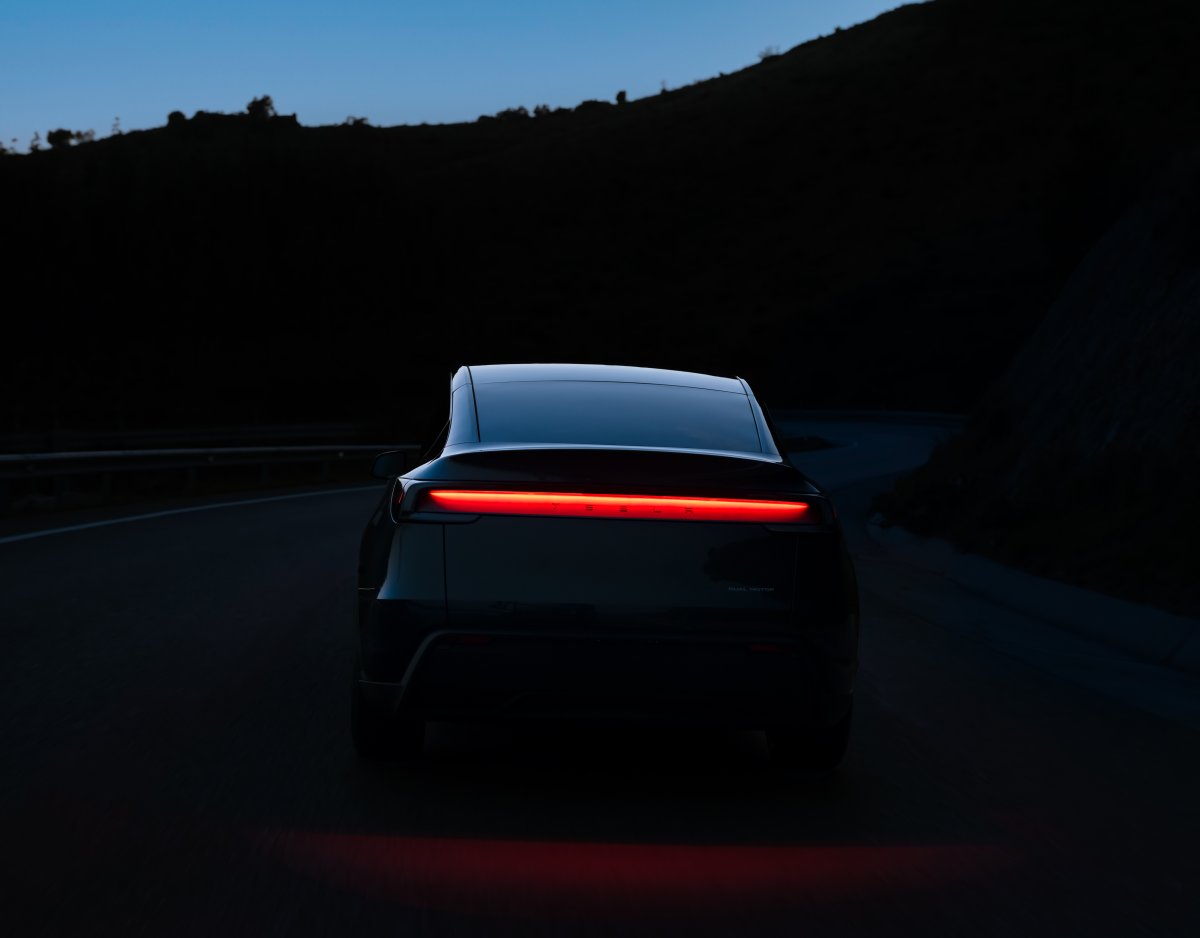테슬라 로보택시: 새로운 FSD 기능 분석

테슬라의 로보택시 네트워크 출시를 통해 우리는 교통의 미래를 엿볼 수 있었을 뿐만 아니라 FSD의 다음 버전에 대한 자세한 정보도 얻을 수 있었습니다.
조기 체험 라이더들의 영상에서는 현재 공개된 FSD 빌드에 비해 몇 가지 추가 기능이 공개되었으며, 응급 차량 처리 방식 등을 보여주었습니다.
응급 대응자를 위한 안전 제일
FSD 기능의 가장 큰 변화 중 하나는 응급 차량 처리가 개선된 것입니다. 오스틴에서 로보택시가 주행하는 동안, 시각적 및 청각적 데이터를 결합하여 다가오는 구급차를 식별하고, 방향 지시등을 켜고, 구급차가 지나갈 수 있도록 도로변에 부드럽게 정차하는 모습이 포착되었습니다(아래 영상 참조).
이러한 주행은 단순한 법규 인식 이상의 능력을 요구합니다. 안전한 경로를 확보하기 위해 차량을 어디로 이동해야 할지 판단하는 추론 능력은 물론, 사이렌과 경광등을 켜고 있는 구급차나 다른 응급 서비스 차량을 신속하게 식별하는 능력도 필요합니다. 잘못된 조작은 상황을 악화시킬 수 있으므로, 상황을 이해하고 안전하고 예측 가능한 조치를 취하는 것이 매우 중요합니다.
로보택시가 구급차가 도착할 때까지 정차합니다. pic.twitter.com/QFdLggMiUy
FSD와 로보택시가 대중의 신뢰와 규제 승인을 모두 얻으려면 이 기술은 절대 양보할 수 없으며, 테슬라는 바로 이 기술을 통해 그 발전을 보여주었습니다. 로보택시가 일반 도로에 나오기 전에 테슬라가 이 기능을 추가한 것은 놀라운 일이 아닙니다.
이 기능은 테슬라가 이전에 FSD V13의 향후 업데이트에 포함될 예정이라고 언급한 바 있으므로, 향후 고객 빌드에도 적용될 것으로 예상됩니다.
자동 카메라 청소
로보택시 함대는 사람의 지속적인 개입 없이 어떻게 눈을 깨끗하게 유지할 수 있을까요? 테슬라가 FSD 릴리스 노트에서 암시했던 기발한 새 기능이 그 해답을 제공합니다. 로보택시, 이제 주요 전면 카메라 세척을 위해 설계된 특정 와이퍼 및 워셔액 시퀀스를 작동시킬 수 있습니다.
테슬라 로보택시 신형 와이퍼 작동 모습 (카메라 세척 모드) pic.twitter.com/aPPNEvAWQZ
사소한 기능처럼 보일 수 있지만, 테슬라의 주요 과제 중 하나인 센서 선명도 유지에 대한 훌륭한 해결책입니다. 차량이 앞유리를 여러 번 닦을 수도 있지만, 이 기능은 와이퍼액과 워셔액을 해당 부위에 집중 분사하여 앞유리의 가장 중요한 부분을 최대한 깨끗하게 세척하는 현명한 해결책입니다.
복잡한 조작
현재 FSD V13.2.9 빌드에서 간혹 문제가 발생하는 두 가지 영역은 유턴과 혼잡한 주차장 진입입니다. 최신 로보택시 빌드는 이 두 가지 측면에서 모두 개선된 것으로 보입니다.
첫 번째 영상은 로보택시가 망설임 없이 완벽하게 유턴한 후, 부드럽게 차선을 변경하여 회전하는 모습을 보여줍니다.
로보택시가 완벽하게 유턴하는 모습 pic.twitter.com/aZ7BwWAqe0
X에 대한 또 다른 영상은 FSD가 복잡한 주차장을 정확하게 주행하며 더욱 자신감 있는 모습을 보여줍니다. 오늘날의 빌드는 주차장에서 어려움을 겪을 수 있습니다. 필요하지 않을 때는 느리고 지나치게 조심하거나, 다른 곳에서는 지나치게 자신감을 보이는 경우가 있습니다. 이번 로보택시 FSD 빌드에서는 경로 계획 및 신뢰도가 향상되어 이러한 문제가 개선된 것으로 보입니다.
테슬라 로보택시 서비스는 정말 매끄럽습니다. 주차장 처리 능력이 매우 뛰어나 경쟁사보다 눈에 띄게 뛰어납니다. pic.twitter.com/D5OxSrajCW
FSD는 거의 1년 전부터 약속되어 온 주차장과 진입로 등 더욱 복잡한 목적지 설정 기능도 제공할 것으로 예상됩니다. 로보택시 FSD는 위의 구급차 예시처럼 도로에서 안전하게 정차할 수 있는 기능도 갖추었지만, 이 기능을 활용하여 승객을 내리고 탑승시킵니다. 이 기능은 FSD v13.2의 향후 개선 사항 섹션에서 언급되었습니다.
향상된 야간 주행 성능
야간 주행은 헤드라이트 눈부심과 시야 감소 등 추가적인 어려움을 야기합니다. 최신 버전의 FSD는 주간 주행과 거의 동일한 수준으로 이러한 문제를 해결하는 것으로 보입니다. 테슬라 로보택시는 자정까지 이용 가능하다는 점을 기억하세요. 얼리 액세스 이용자들은 FSD가 훨씬 더 부드럽고 기존 FSD 빌드보다 한 단계 더 발전했다고 언급했습니다.
테슬라 로보택시는 야간 주행에서도 인상적인 성능을 보여주며, 낮처럼 부드럽게 인앤아웃에 도착했습니다.pic.twitter.com/yQOhphtR0q
고객 지원
승객이 안전하지 않다고 느끼거나 중요한 질문이 있을 때는 어떻게 해야 할까요? 테슬라는 이러한 목적으로 뒷좌석 화면에 두 개의 주요 버튼을 배치했습니다. 사용자는 지원 요청 기능을 제어할 수 있으며, 이를 통해 테슬라 로보택시 운영 센터의 실제 상담원과 영상 통화를 통해 거의 즉시 연결됩니다.
테슬라 로보택시에서 지원 버튼을 누르면 다음과 같은 일이 발생합니다.
실시간 상담원이 거의 즉시 응답했습니다. pic.twitter.com/MIeY1ehz47
기본적인 주행 기능은 아니지만, Tesla 팀이 Robotaxi 차량에 원격으로 지원을 제공할 수 있음을 의미합니다. 예를 들어, 게이트가 있는 커뮤니티를 통과하려고 시도하는 대신 차량이 직진하도록 지시 명령을 내릴 수 있습니다.
또 다른 옵션인 'Pull Over'를 사용하면 탑승자가 즉시 차량에 안전하게 정차하도록 요청할 수 있으며, 차량은 안전하고 개방된 위치를 찾으면 정차합니다. 정차 후에는 주행을 계속하거나 Robotaxi에서 내릴 수 있습니다.
두 옵션 모두 계속하기 전에 '정말입니까?' 버튼을 표시하므로 'Pull Over' 버튼을 탭해도 Robotaxi가 갑자기 멈추지 않습니다. 실수로 버튼을 눌렀습니다.
테슬라 오너에게 미치는 영향
이러한 기능은 향후 FSD 빌드에 포함될 가능성이 높습니다. 이는 FSD를 평가하는 새로운 기준이 될 것이며, 적어도 고객 차량에 적용되기 시작하면 그 기준이 될 것입니다.
더욱 향상된 조종 성능과 응급 차량 대응 등 핵심 주행 개선 사항 중 다수는 향후 FSD 업데이트를 통해 더 많은 차량에 적용될 예정입니다.
Robotaxi는 단순한 서비스가 아니라 테슬라의 무인 FSD 빌드를 미리 보여주는 서비스라는 점을 기억하세요.


